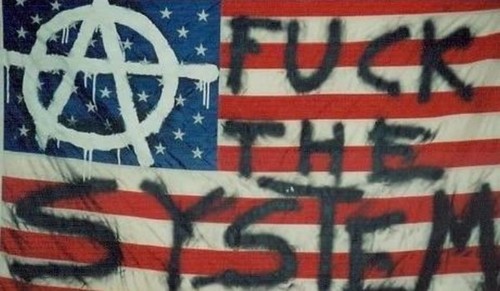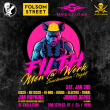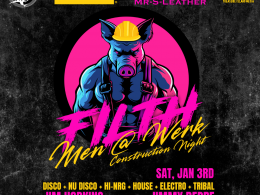
Sometimes I sit and read things on the internet with that rushed feeling I got when I was falling behind in my Women’s Studies class coursework. This holds particularly true for anything related to queer history — it’s like a never-ending game of catch up where I’m trying to put all the pieces together of this map. I mean, if we don’t know what got us here, how will we move forward? Peter Tatchell seems to share that feeling. He wrote about how the Gay Liberation Front Manifesto changed him as an activist. It wasn’t until I read his piece that I realized I had never actually read the manifesto itself.
The Gay Liberation Front Manifesto was published by the London-based Gay Liberation Front (GLF) in 1971. The manifesto encourages us to identify and challenge the insidious ways in which oppressive attitudes permeate our relationship with others and our understanding of self. The manifesto outlines how the nuclear family, formal education, media, workplace, public policies and the mental health field function as spaces where rigid gender norms, sexism and homophobia are sold to us as markers of ‘normalcy.’ Although sometimes simplistic to a fault, the manifesto provides us with a solid, basic guide on how the patriarchy benefits a selected few that become invested in replicating its systems of oppression as a means of maintaining the status quo.
The manifesto places the LGBT struggle within the greater anti-capitalist, anti-imperialist movement. It explains our oppression as a consequence of sexism and how capitalism is interested in maintaining the false need for gender roles. In a society that is “founded upon the sanctity of the family, the right to property, and the worthwhileness of ‘getting ahead,'” there is a high value placed on reproductive sex, which commodifies women for their ability to carry a child. Gender norms ensure “property acquisition and worldly success” remain masculine traits. As such, the GLFM proposes that the abolition of the nuclear (heterosexual) family as the ideal would debase most arguments against LGBT equality and raise each of our diverse, wonky, loving, inexplicable families to the same level.
The Gay Liberation Front Manifesto is not alone. Indeed, the anti-capitalist, anti-imperialist sentiment is echoed in Sexo y Revolución by el Frente de Liberación Homosexual — the Gay Liberation Front in Argentina. In Sexo y Revolución, a zine-manifesto hybrid published in 1973, el Frente explores the reasons behind why as a group we are willing to accept and even defend the oppression we are placed under. Like the GLF manifesto, it concludes that capitalism ensures its continuity by permeating into all areas of society so as to prevent the individual from stepping out of and questioning the system. It also concludes that gender roles must be subverted, but centers the idea around sexual pleasure as currency for liberation.
Sexo y Revolución builds upon the ideas suggested by the GLFM and presses further on the individual level. Because the personal is political, el sexo mismo es una cuestión política. The nuclear heterosexual family will pervade as long as sex continues to be thought of only as it relates to reproduction. As long as sex is considered solely a means of reproduction, then queers can be freely labeled as deviants. Sexo y Revolución explains then that queer oppression is a result of the threat of sex as an act of pleasure and not reproduction, which denies the role of the active male and passive female as taught by gender norms. We are the scapegoats of sexual repression. Our liberation will not be real unless it takes place along personal and ideological lines as well as economic and political.
Both texts also highlight the shared plight of the LGBT struggle and feminist groups. In a call for an alliance with feminist groups, the GLF Manifesto remarks on the need for gay men to surrender the “degree of male chauvinism and male privilege that they still all possess.” Their attempts at acknowledging the importance of intersectionality, while commendable, are glaringly flawed. While both manifestos read as surprisingly non-exclusionary of any LGBT identity, I do wish their language wouldn’t feel as if spoken by predominantly cisgender white people by default. Non-exclusion will never equal intentional, explicit inclusion. I mean, at the bare minimum, racism is also a thing that oppresses LGBT people and feeds the capitalist machine.
There is no evidence, beyond their shared name, that the Gay Liberation Front and el Frente de Liberación Homosexual collaborated on these pieces. It is remarkable then that they mirrored each other’s main ideals so clearly, ideals that remain radical to this day in their rejection of assimilation into the heterosexual standard as prescribed by the mainstream. After the publication of the manifesto, the Gay Liberation Front went on to execute high-profile protests, most notably their disruption of the launch of the morality campaign, Festival of Light. El Frente de Liberación Homosexual, on the other hand, faced political persecution as a result of the dictatorship that took hold of Argentina, leaving Sexo y Revolución as their last work.
Tatchell remarks that the Gay Liberation Front Manifesto goals “remain fresh, innovative, challenging and inspiring.” I would say the same of Sexo y Revolución. I think even now we’d be hard pressed to find another LGBT movement with equal political clout that openly rejects compulsory monogamy and calls for a focus on greater structural changes beyond policy making, particularly within the U.S. Over thirty years later the manifestos remain revolutionary. Their words, while imperfect, left me feeling like I had found another piece of the map.
What are your thoughts on this article? Agree? Disagree? Share your opinion below.
(Note: This article does not necessarily represent the opinions of Paul Morris or Treasure Island Media. We felt it right to post, allowing each of you to digest what was shared, and form your own opinion. We look forward to hearing what you think.)













